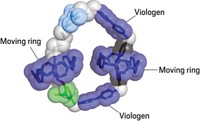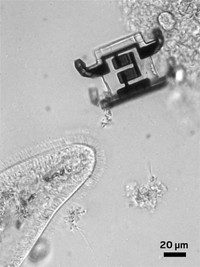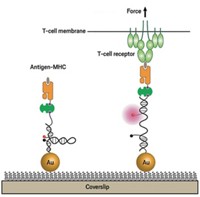Advertisement
Grab your lab coat. Let's get started
Welcome!
Welcome!
Create an account below to get 6 C&EN articles per month, receive newsletters and more - all free.
It seems this is your first time logging in online. Please enter the following information to continue.
As an ACS member you automatically get access to this site. All we need is few more details to create your reading experience.
Not you? Sign in with a different account.
Not you? Sign in with a different account.
ERROR 1
ERROR 1
ERROR 2
ERROR 2
ERROR 2
ERROR 2
ERROR 2
Password and Confirm password must match.
If you have an ACS member number, please enter it here so we can link this account to your membership. (optional)
ERROR 2
ACS values your privacy. By submitting your information, you are gaining access to C&EN and subscribing to our weekly newsletter. We use the information you provide to make your reading experience better, and we will never sell your data to third party members.
Analytical Chemistry
Getting Bacteria To Do The Work
Microscale motor relies on yoked microbes to spin a rotor
by Sarah Everts
September 4, 2006
| A version of this story appeared in
Volume 84, Issue 36
Binding beast to machine,researchers in Japan have created a micromotor powered entirely by bacteria. It's a spinning device that successfully integrates inorganic materials with living bacteria (Proc. Natl. Acad. Sci. USA, DOI: 10.1073/pnas.0604122103).
The micromotor consists of three parts: a silicon circular track; a silicon dioxide rotor that fits in the track's groove; and Mycoplasma mobile, a species of gliding bacteria that is covalently yoked to the rotor. M. mobile moves around the track at a speed of 2-5 ??m/second, dragging the rotor along with it.
"We had predicted this micromotor would work, theoretically," says author Yuichi Hiratsuka, of the National Institute of Advanced Industrial Science & Technology in Tsukuba. "But we were absolutely excited when we first saw it rotate."

Hiratsuka says this type of micromotor might one day be used to drive a pump on a microchip or be used in electronic generator systems that are powered entirely by glucose, the bacteria's energy source.
Standard semiconductor manufacturing techniques were used to build the micromachine. The tough part was creating the interface between the inorganic micromachine and the bacteria, Hiratsuka says. M. mobile won't budge on surfaces devoid of sialic acid-containing proteins, so the researchers deposited one such protein, fetuin, as a top layer on the track.
To attach M. mobile to the rotor, the researchers connected a 20-nm flexible polyethylene linker to proteins on the bacteria's exterior surface. At the far end of the linker, they deposited biotin, an imidazole derivative. Biotin binds tightly to the protein streptavidin, which was coated on the rotor. Et voilà, a micromachine set to swirl.
William O. Hancock, a bioengineer at Pennsylvania State University, calls the research "elegant." "It's a milestone along the way of proving the idea that you can have biomechanical systems powering engineered devices." He adds, "I think this work will have legs."
Hiratsuka's results join an eclectic body of research that uses living cells to power micromachinery. Last year, a Harvard University group used surface chemistry to attach polystyrene beads to swimming single-celled algae. The algae's movement is directed by light, and once they reached their destination, the beads could be removed through photochemistry (Proc. Natl. Acad. Sci. USA 2005, 102, 11963). Bioengineers at UCLA have also harnessed the beating power of heart muscle cells to move a microdevice (Nat. Mater. 2005, 4, 180).






Join the conversation
Contact the reporter
Submit a Letter to the Editor for publication
Engage with us on Twitter